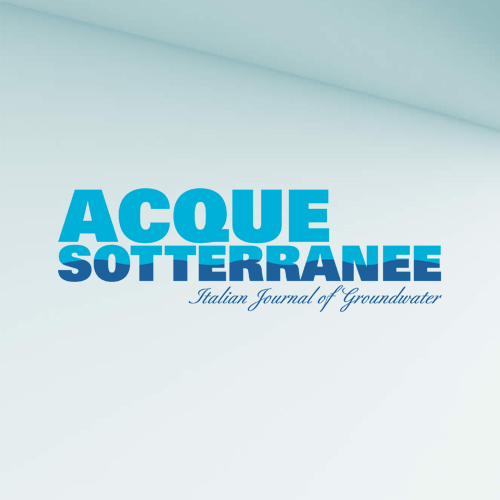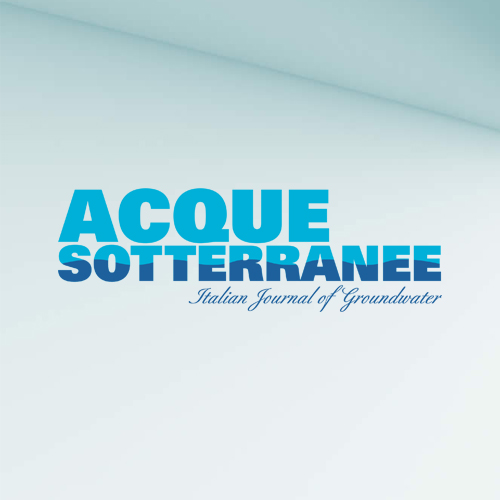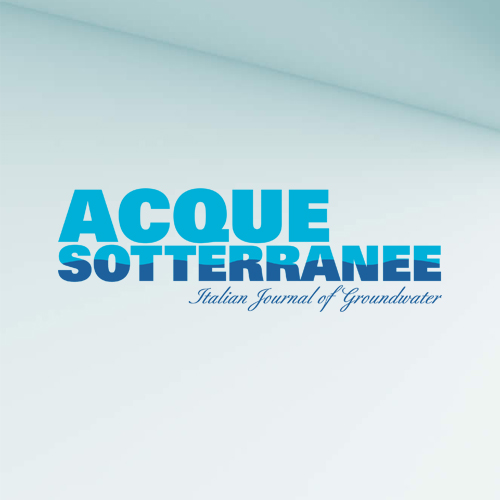Spatio-temporal variability of groundwater hydrochemical features in different hydrogeological settings in Piedmont and Campania regions (Italy), a comparative study
Accepted: 19 March 2024
SUPPLEMENTARY MATERIALS: 106
All claims expressed in this article are solely those of the authors and do not necessarily represent those of their affiliated organizations, or those of the publisher, the editors and the reviewers. Any product that may be evaluated in this article or claim that may be made by its manufacturer is not guaranteed or endorsed by the publisher.
Authors
The spatio-temporal evolution of groundwater chemistry has seen an increase in interest over the last decade at a global level. Identifying and discerning the sources of the natural and anthropogenic compounds and the actual hydrochemical processes, as well as their evolution, is essential to support a sustainable planning for managing and protecting groundwater resources at the present time and in the future. The main objective of this study is the comparison of two study areas in Italy (Piedmont and Campania Regions), different in their geographical and geological contexts and climate conditions, to highlight the similarities and differences in the hydrogeochemical behavior in space and time. Three main ions were considered (NO3 –, SO4 2–, Na+) and analyzed to identify the sources and hydrochemical processes responsible for their spatial distribution in the 2015-2020 period and evaluate the existence and the potential causes of trends in their concentration for the 2000-2020 period. Results highlight specific factors and processes distinguishing the spatial distribution and temporal variability of ion concentrations in Piedmont and Campania study areas. These processes are mainly related to the geological and geographical features of the study areas. In both areas, a significant influence of anthropogenic pressures emerges for both spatial and temporal evolutions, with remarkably increasing trends in NO3 – concentrations. In conclusion, some factors and processes emerge as site-specific, mainly related to the geological aspects and natural hydrochemical processes, whereas others are in common (i.e., anthropogenic impacts); thus, reinforcing the advantage of making comparative studies.
How to Cite

This work is licensed under a Creative Commons Attribution-NonCommercial 4.0 International License.
PAGEPress has chosen to apply the Creative Commons Attribution NonCommercial 4.0 International License (CC BY-NC 4.0) to all manuscripts to be published.
Similar Articles
- Alessio Barbagli, Fabio Nunzio Antonio Brogna, Ivan Callegari, Enrico Guastaldi, Giovanni Liali, Natalie Marsico, Carmela Rezza, Marilena Trotta, Multi-isotope and Hydrogeochemical approach for characterizing Saturnia thermal groundwater (Grosseto, Italy) , Acque Sotterranee - Italian Journal of Groundwater: Vol. 2 No. 4 (2013)
- Loris Colombo, Statistical methods and transport modeling to assess PCE hotspots and diffuse pollution in groundwater (Milan FUA) , Acque Sotterranee - Italian Journal of Groundwater: Vol. 6 No. 4 (2017)
- Michele Remonti, Piero Mori, Evaluation of groundwater-surface water interaction through groundwater modelling: simulation of the effects of removal of a dam along a river at a contaminated site in Northern France , Acque Sotterranee - Italian Journal of Groundwater: Vol. 2 No. 2 (2013)
- Marco Amanti, Giovanni Conte, Lucio Martarelli, Gennaro Maria Monti, Guido Motteran, Anna Rosa Scalise, Roberto Serafini, Angelantonio Silvi, Hydrogeological map of Italy: the preliminary Sheet N. 348 Antrodoco (Central Italy) , Acque Sotterranee - Italian Journal of Groundwater: Vol. 5 No. 2 (2016)
- Luca Zini, Chiara Calligaris, Francesco Treu, Enrico Zavagno, Daniela Iervolino, Federica Lippi, Groundwater sustainability in the Friuli Plain , Acque Sotterranee - Italian Journal of Groundwater: Vol. 12 No. 3 (2023)
- Khaled Harizi , Mohamed Reda Menani, Nabil Chabour, Sofiane Labar, Initial assessment of the groundwater flow and budget using Geographic Information System, MODFLOW-2005 and the FREEWAT modeling tool in Bouteldja coastal aquifer (Northern East of Algeria) , Acque Sotterranee - Italian Journal of Groundwater: Vol. 10 No. 3 (2021)
- Saad Younes Ghoubachi, Geology of groundwater occurrences of the Lower Cretaceus sandstone aquifer in East Central Sinai, Egypt , Acque Sotterranee - Italian Journal of Groundwater: Vol. 5 No. 4 (2016)
- Filiz Dadaser-Celik, Mete Celik, Modelling surface water-groundwater interactions at the Palas Basin (Turkey) using FREEWAT , Acque Sotterranee - Italian Journal of Groundwater: Vol. 6 No. 3 (2017)
- Alberto Tazioli, Lucia Aquilanti, Francesca Clementi, Mirco Marcellini, Torquato Nanni, Stefano Palpacelli, Paola Maria Vivalda, Hydraulic contacts identification in the aquifers of limestone ridges: tracer tests in the Montelago pilot area (Central Apennines) , Acque Sotterranee - Italian Journal of Groundwater: Vol. 5 No. 2 (2016)
- Matia Menichini, Marco Doveri, Modelling tools for quantitative evaluations on the Versilia coastal aquifer system (Tuscany, Italy) in terms of groundwater components and possible effects of climate extreme events , Acque Sotterranee - Italian Journal of Groundwater: Vol. 9 No. 3 (2020)
<< < 1 2 3 4 5 6 7 8 9 10 > >>
You may also start an advanced similarity search for this article.


 https://doi.org/10.7343/as-2024-748
https://doi.org/10.7343/as-2024-748










